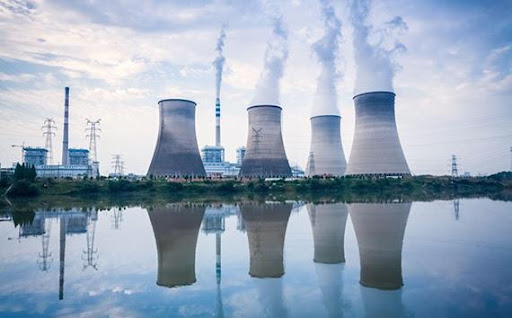The entire greenhouse gas (GHG) emissions that a person, business, event, or product is responsible for, directly and indirectly, are called their “carbon footprint.” The total emissions attributable to the creation of raw materials, manufacture, usage, and end-of-life are combined to determine it. GHGs, such as carbon dioxide (CO2), methane (CH4), and nitrous oxide (N2O), each having a different capacity to trap heat in the atmosphere, may be released during the lifespan or lifecycle of a product. The global warming potential (GWP) of each gas, measured in units of mass of carbon dioxide equivalents (CO2e), accounts for these discrepancies. [1].
Emissions of Carbon Footprints on a Domestic Scale
Most of our houses’ carbon footprint comes from heating and cooling systems. These gadgets are frequently powered by electricity, and the energy-producing method determines how much carbon dioxide is released into the atmosphere. For instance, compared to energy produced from renewable sources like solar or wind power, electricity generated from coal creates a lot more carbon dioxide.
The use of electric vehicles (EVs) to lessen transportation-related carbon emissions is growing in popularity. However, the carbon impact of EVs still depends on the electrical source used to charge them. When electric vehicles (EVs) are charged using coal-generated power, their carbon footprint is more than when they are charged using renewable energy sources.
The world’s leading energy source is fossil fuels, including coal, oil, and natural gas. However, they also contribute significantly to the annual emissions of CO2 into our atmosphere, amounting to billions of tonnes. Fossil fuels leave some of the most significant carbon footprints. Oil emits 970 grams of carbon dioxide per kWh generated, coal 820 grams, and natural gas 490 grams on a life-cycle basis. They are considered dirty energy since they directly contribute to climate change and have several detrimental environmental repercussions.[2].
Eighteen thousand terawatt-hours of energy are produced by electrical power yearly, accounting for around 40% of all energy people use. It produces more than ten gigatons of carbon dioxide annually, the most significant sectoral contribution to outputs from fossil fuels. However, various technologies, including solar, wind, nuclear, and geothermal, may provide energy without releasing any net emissions of carbon from fuel combustion.[3].
Does Electricity Produce Carbon Dioxide Emissions?
Not all Electrical Energy is produced using energy sources that are renewable and clean. In real terms, consuming fossil fuels like coal, natural gas, and oil contributes much of the world’s electrical power. Currently, sources that release carbon dioxide and other greenhouse gases (GHGs) account for 63.3 per cent of the world’s energy consumption. Burning fossil fuels produces electricity by rotating turbines or generators, which use heat to produce power. In 2021, the US generated 38 per cent of its energy from natural gas, 22 per cent from coal, and 1 per cent or less from other petroleum products.[4].

Heat and Electrical Energy production accounts for more global CO emissions than other industries. The heat and electricity combined caused 15.59 billion tonnes of greenhouse gas emissions worldwide in 2018. In context, the automobile industry produced 8.26 billion tonnes of carbon dioxide in the same year, making it the second-highest emitter.
The combustion of coal is the main contributor to over 90 per cent of carbon dioxide emissions from the production of energy worldwide. Worldwide, coal continues to be the principal fuel used to generate energy. 37 per cent of the power produced worldwide in 2019 came from coal combustion.
How can we calculate carbon emissions from electricity consumption?
Since there are many different ways to generate power, it can be challenging to determine the worldwide emissions associated with electricity use. For instance, the US employs both clean and renewable energy sources, such as geothermal, wind, solar, hydropower, biomass, and nuclear power, alongside fossil fuels like natural gas, coal, and oil.
Kilowatt-hours (kWh) are used to quantify power use, and agencies such as the U.S. Energy and Information Administration (EIA) estimate the amount of carbon dioxide released from each kWh.
![On a life-cycle basis, green energy's carbon footprint ranges from 12 to 48 grams of CO2 equivalent per kWh (gCO2/KWh) of electricity produced; here is a complete description of the carbon footprint of certain energy types). [5]](https://scientiamag.org/wp-content/uploads/2023/11/CO-emission-2.jpg)
How can we reduce the carbon footprint emissions?
Improving efficiency is the most straightforward approach to reducing the carbon generated during power production. However, these benefits have their boundaries, and there’s the well-known problem that increased efficiency might result in increased consumption.
Therefore, switching to carbon-free power sources is a necessary part of the global response to climate change. This calls for a reexamination of carbon pricing as well as, in certain situations, the development of new technologies, transmission networks, and intelligent grids. Above all, though, larger-scale carbon-free generation from diverse sources is required to meet the world’s growing energy needs.
Carbon capturing and storage: Refusing to discharge CO2 from fossil fuels into the atmosphere is one option to giving them up. Using carbon capture and storage (CCS) technology, CO2 is extracted from exhaust gases and stored underground. The method might cut carbon emissions from power plants by 80–90 per cent, but that amount could decrease to as low as 67 per cent when life-cycle considerations are taken into account.[6]
Conclusion
As a more sustainable and environmentally friendly substitute for fossil fuels, now the world’s primary energy source and a significant cause of greenhouse gas emissions, electrical energy has enormous promise. The article emphasises how carbon capture and storage (CCS) technology and energy storage solutions may help with the problems of using renewable energy sources and lowering carbon footprints.
The article’s conclusion emphasises the need for people to support energy efficiency initiatives, invest in CCS technology, and hasten the adoption of renewable energy sources. It inspires people to make little, everyday adjustments to help achieve future carbon neutrality.
References:
- https://css.umich.edu/publications/factsheets/sustainability-indicators/carbon-footprint-factsheet (An article discussion from the Center of Sustainable Systems at the University of Michigan)
- https://impactful.ninja/the-carbon-footprint-of-fossil-fuels/#:~:text=fossilfuels-have-some-of-on-a-life-cycle
- https://doi.org/10.1038/454816a Nature’s article title: (Energy alternatives: Electricity without carbon)
- https://terrapass.com/blog/carbon-dioxide-emissions-from-electricity/
- https://impactful.ninja/the-carbon-footprint-of-alternative-energy/ (Dr Grace Smoot’s comprehensive discussion about Carbon Footprints Life Cycle)
- https://sustainability.georgetown.edu/reducing-domestic-production-in-achieving-sustainbility/
- https://doi.org/10.1038/454816a (An article discussion from Nature Energy)
Also Read: Cow burps heat up the Earth; Biotech company invents Bovine Beano

Mr. M. Kashif Raza is a Physics undergrad at the institute of Physics, GC University Lahore. He’s Scientia’s Intern (Cohort-2) and a regular writer in Scientia Mag. Currently serving as a RA intern in the Nanotechnology laboratory GCU Lahore. He is working as Science Communicator and Science Writer in different organizations. Furthermore, He will be pursuing his further research at Helmholtz-Zentrum Berlin Institute for Materials & Energy, Germany. He wrote and co-authored a couple of research articles for national and international media in the field of Nanotechnology & Nanoscience.

